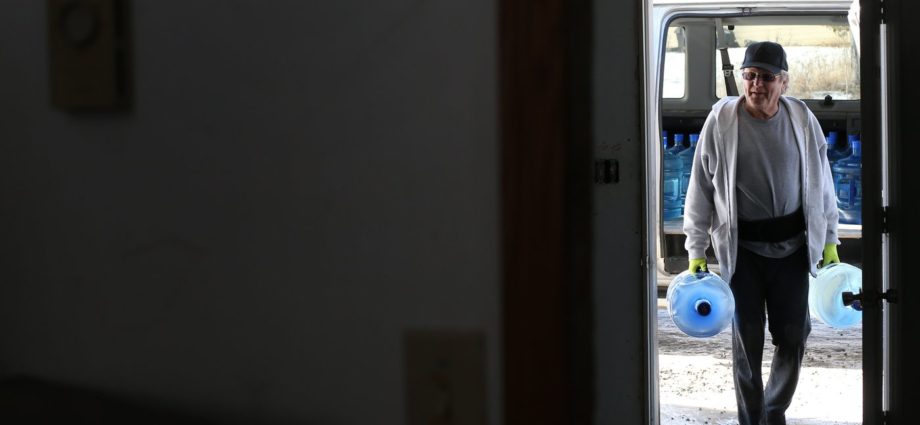
Ottawa launches website to detail progress on drinking-water advisories in First Nations communities
Bottled water is stored in a building once used as a gym on Shoal Lake 40. The community has been under a long-standing boil water advisory, but a new water treatment plant is expected to be complete this July. SHANNON VANRAES / THE GLOBE AND MAIL. Shannon VanRaes
By Willow Fiddler, Local Journalism Initiative Reporter, The Globe and Mail
Mar 10, 2021
The federal government has created a new website in an attempt to be more transparent about its progress to remedy long-term drinking-water advisories in First Nations communities across the country, but is unable to say when all such advisories will be lifted.
At a news conference in Ottawa, Indigenous Services Minister Marc Miller said the new site is designed to offer as much information as possible on progress being made to improve water quality in First Nations communities still facing drinking-water advisories.
“The effort today is for Canadians to see what I see and to give everyone as much information as possible as to the status of each community, as well as the work that’s been done – and the commitment of this government to get it done,” he said.
Every community has a plan that needs to be shared with Canadians and First Nations communities, Mr. Miller added.

The announcement follows pressure from First Nations leaders who have called on the Liberal government make good on its marquee 2015 election pledge to lift all the advisories by this month. In December, 2020, Mr. Miller said the government would not be able to meet that goal, but pointed to $1.5-billion in the fall economic statement designed to expedite the lifting of remaining advisories.
Nishnawbe Aski Nation Grand Chief Alvin Fiddler said Wednesday he’s not convinced the new website will help Indigenous communities get clean water any faster.
“It doesn’t really mean a lot for our communities,” Mr. Fiddler said. “Especially communities that have been on the boil-water advisory list for many, many years.”
Mr. Fiddler said about 14 communities in Nishnawbe Aski Nation, an area that includes 49 mostly remote First Nations, remain on the government’s long-term boil-water advisory list.
Assembly of First Nations National Chief Perry Bellegarde said there has been considerable progress since 2015 to end boil-water advisories, but he continues to urge the federal government to work with First Nations to implement long-term solutions within realistic timelines that will provide certainty to affected communities.
Ottawa has also been pressed to take greater action by Auditor-General Karen Hogan, who recently said in an audit tabled in Parliament that the federal government has not provided adequate support to First Nations to access safe drinking water.
Long-term advisories are those that have been in place for more than a year and are issued by First Nations when tests show that the water in their community is not safe to drink. Lifting an advisory is a decision taken by the communities themselves. Federal officials say they work with the communities to address health and safety issues and ensure water treatment facilities are properly operated and maintained.
Mr. Miller said when the Liberals came to power, there were 105 long-term drinking-water advisories – adding that 101 advisories have been lifted within the span of their mandate. Indigenous Services Canada said that since November, 2015, clean water access has been restored to around 5,850 homes and 430 community buildings in 73 First Nations.
There are currently 58 long-term water advisories in 38 communities. Some communities have more than one advisory.
Conservative Indigenous Services critic Gary Vidal said Wednesday that the new website is not a strategy nor a solution to lift the long-term water advisories.
Subscribe to our newsletter.
NDP MP Charlie Angus said the government is letting down First Nation families in its failure to deliver clean water on reserves. “This is ridiculous,” he said, stressing the need for a credible plan to address the issue rather than an online site tracking the situation.
This story was written by Willow Fiddler and Kristy Kirkup.

